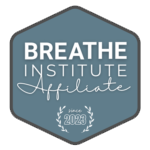
 San Francisco, Marin, and Oakland, CA
San Francisco, Marin, and Oakland, CA
You brush and floss your teeth every day. You avoid high-sugar foods and drinks. You also see your dentist in San Francisco every six months for a check-up. In spite of this regimen, you keep developing cavities. This can be a frustrating situation, as well as one that could compromise your long-term oral health. Finding a solution is key, and the cause for your tooth decay could be the way that you breathe. In this article, your Bay Area myofunctional therapists at Glen Park Dental explore how mouth breathing could increase cavities.
How you breathe matters
Unless you have asthma or another condition that makes breathing difficult, you probably never take the time to consider, much less evaluate the way that you breathe. We encourage you to do that. Now, are you breathing through your nose or your mouth? Nasal breathing is the preferred way to inhale. It provides more oxygenation to the blood and body. Plus, nasal passages warm and filter the air before it enters the lungs. Mouth breathing, however, is not healthy and has detrimental effects.
Why is mouth breathing so harmful? For one, open mouth breathing dries out your mouth. This diminishes your production of saliva, depriving you of one of your most effective natural means of defending against bacteria, the initial building block of tooth decay. Mouth breathing also throws off the mouth’s pH, creating a more acidic environment that is altogether more hospitable to tooth decay.
Over time, mouth breathing can have a host of negative consequences on both your oral health and overall wellness. The consistent open mouth posture can lead to snoring and even sleep apnea, a serious sleep breathing disorder. In children, mouth breathing can hinder the proper development of the mouth, jaws, and face. This habit even can affect appearance, elongating the facial structure and leading to crooked or overlapped teeth.
Correcting Mouth Breathing
Breathing is an unconscious act but changing the way you breathe is easier said than done. You can’t just decide to breathe through the nose instead of the mouth. You have to re-train yourself to breathe the preferred way, and this can be achieved through a course of myofunctional therapy. This method of therapy entails performing a series of exercises meant to work the muscles of the mouth and tongue. When performed, these exercises reverse dysfunctions in the orofacial system and negative habits that have developed as a result—such as mouth breathing.
Other issues that can be corrected through myofunctional therapy include difficulties chewing and/or swallowing or negative habits like thumb sucking or tongue thrust. Myofunctional therapy can help with any of these issues because one of its main goals is to achieve ideal oral posture while the mouth is at rest: with lips together, teeth closed, and the tongue resting comfortably against the roof of the mouth while breathing nasally.
Myofunctional Therapy in San Francisco
Myofunctional therapy is simple, pain-free, and medication-free. Any person, no matter their age, can benefit from this therapy as long as it is administered under the guidance of a trained, experienced myofunctional therapist. At Glen Park Dental, we are proud to offer myofunctional therapy to our patients in the areas of San Francisco, Marin, and Oakland in California. Call (415) 585-1500 to schedule your consultation today.


